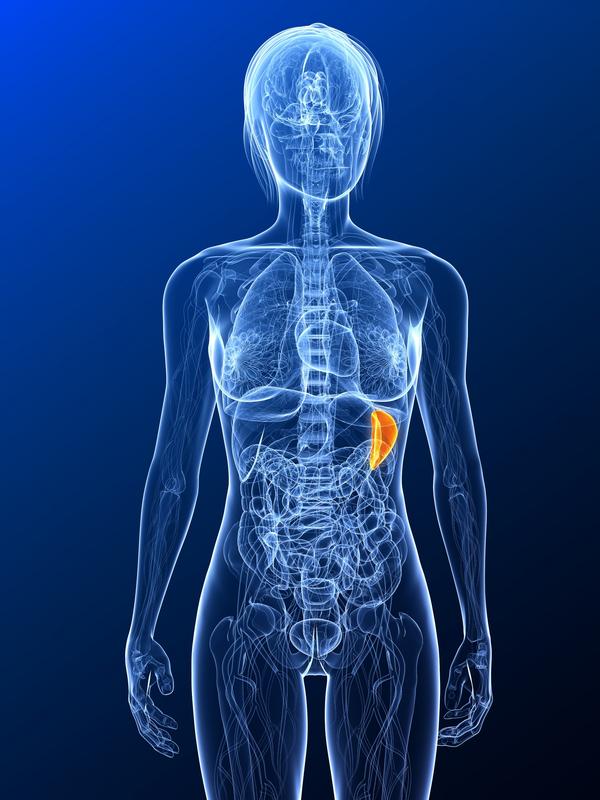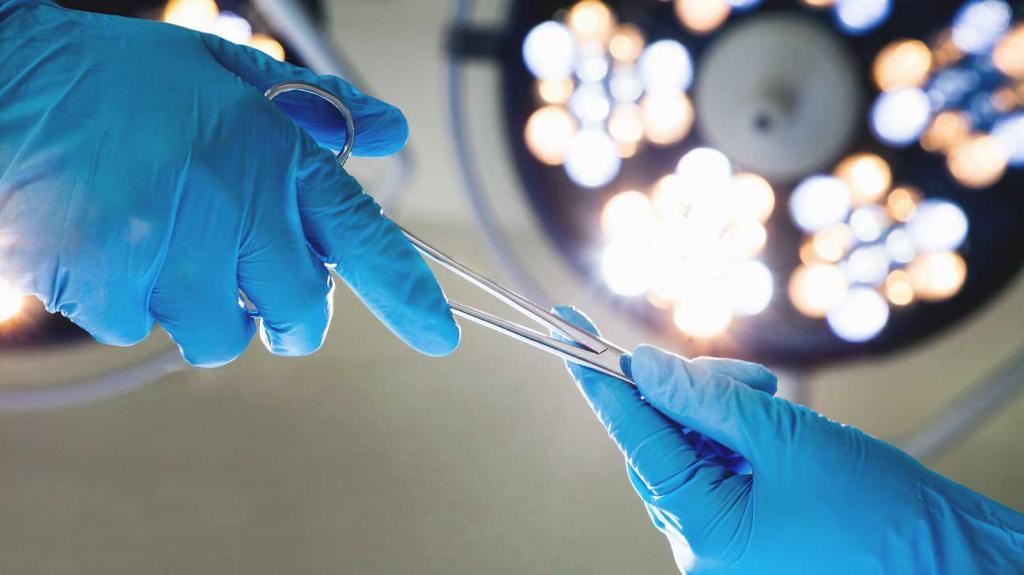An abscess of the spleen (according to ICD-10 - D73.3) is a special formation in this organ, which consists of a capsule that limits the purulent exudate from the surrounding tissue. As a result of its formation, the patient develops symptoms of increasing intoxication, which is expressed in fever, and, in addition, in severe weakness, pain in the left hypochondrium and vomiting.
Causes of spleen abscess
Why does this pathology arise?
Staphylococci and streptococci often become the cause of purulent, and at the same time inflammatory process in the spleen. Thus, the root cause of the formation of the purulent cavity is the infectious process, which is most often caused by microscopic organisms such as staphylococcus, streptococcus and salmonella. In more rare situations, certain gram-negative bacteria along with fungi are the infectious agent. Specialists distinguish the following basic causes of an abscess in the tissues of the spleen:
- The presence of infectious diseases in the form of typhoid or relapsing fever, malaria, diphtheria, scarlet fever and the like.
- The patient has open injuries and bruises of the spleen.
- Metastatic abscesses of the spleen in sepsis.
- Due to postpartum sepsis, infectious left-sided paranephritis, gastric ulcer.
- In the presence of abscesses in the abdominal cavity, and, in addition, against the background of cystitis, osteomyelitis, pyelonephritis, sepsis, cancer of the stomach and others.
- Against the background of spleen infarction.
- Due to inflammatory diseases of the genitourinary sphere.
- In the presence of benign or malignant tumors of this organ.
- In the presence of echinococcosis of the spleen (that is, with suppuration of the spleen cyst).
- Due to impaired venous blood flow.
Symptoms of this dangerous pathology
The occurrence of a spleen abscess is variable and directly depends on the area of localization of purulent foci, their size, and, in addition, on the scale of the affected tissues. This process can occur rapidly and is usually accompanied by intensely expressed manifestations. Symptoms of spleen abscess:
- A rapid increase in temperature to high values (usually above thirty-nine degrees).
- The patient has severe weakness and chills.
- The appearance of tachycardia.
- Significant deterioration or absolute lack of appetite.
- The occurrence of headache and dizziness.
- The occurrence of severe digestive upset along with vomiting, nausea and diarrhea. The pathogenesis of spleen abscess actively proceeds against the background of these symptoms.
- The occurrence of dry mouth and thirst.
- The appearance of signs of reactive pleurisy along with pain in the left side of the chest with localization of the abscess in the upper region of the organ.
- The presence of tension of the abdominal muscles and pain in the left hypochondrium, in the case of the location of the pathological focus in the lower region of the organ.
- The occurrence of pain of various localization and intensity. Such pain is always brighter in the left hypochondrium, it becomes much stronger when breathing, and can give into the shoulder blade and left clavicle.

Possible complications due to pathology
In some cases, when an abscess of the spleen comes into contact with the walls of the intestine, fistula formation occurs, provoking rupture of blood vessels along with bleeding. With a rupture of the purulent region and an outflow of exudate into the abdominal region, the patient develops peritoneal symptoms in the form of cold sweat, adynamia, blueness of the mucous membranes and muscle tension in the region of the anterior abdominal wall.
What is accompanied by this process?
Sometimes the rupture of the abscess may be accompanied by pus in the lumen of the stomach, urinary organs, bronchi and intestines. Subsequently, in such patients, purulent exudate can be found in sputum, feces or in vomit, as well as in urine.
Empyema pleura
If pus flows into the pleural region, pleural empyema forms in the patient. Spilled peritonitis, which is caused by an abscess burst into the abdominal region, leads to the penetration of the pathogen into the blood, then the patient will soon develop sepsis.
Diagnosis of the disease
Exactly determine the localization along with the size of the spleen abscess will help with computed tomography. This is the most effective diagnostic method. Detection of spleen abscess without the use of instrumental methods of examination is often difficult. In order to confirm the diagnosis, the following studies are carried out:

- Ultrasound examination of the spleen reveals signs of low echogenicity of the organ. The spleen may look like a dark spot. Blood clots can be detected directly in the abscess cavity along with gas bubbles.
- A panoramic shot of the chest and abdominal region is also performed. In the case of the presence of gas in the abscess cavity, in patients on the left, dimming of the subphrenic space is revealed.
- Computed tomography gives the most accurate picture of the location of the pathological focus.
- Carrying out radionuclide scintigraphy with an isotope visualizes the exact location, and at the same time, the structure of the abscess in the form of a clear two-dimensional image, which is obtained due to radiation.
Laboratory tests for an abscess
Laboratory tests in the presence of an abscess are carried out in order to confirm the diagnosis. They are auxiliary diagnostic methods. This is a biochemical and clinical blood test, as well as a study of feces.
Abscess of the spleen - treatment of pathology
Treatment of pathology is only surgical. The need for surgery is explained by the fact that the appearance of pus in this organ, along with the threat of rupture of the cavity, always poses a serious risk to the general health of the patient. The operation can be performed by various methods. It is carried out in a planned or urgent order. True, even a planned type of intervention does not at all mean that such an intervention can be postponed for a long time. The method of surgical treatment of spleen abscess directly depends on the area of localization of the formed purulent area.
Types of surgery for this disease
So, there are the following types of operations:
- Percutaneous drainage and rehabilitation of the abscess. This operation can be performed in the presence of single abscesses with a size of not more than five centimeters, as well as in case of contraindications to the implementation of classical access to the organ through laparotomy. Intervention is carried out under compulsory control of computed tomography or ultrasound. A puncture needle is inserted into the abscess, then pus is removed and an antibiotic is injected into the cavity.
- Performing splenectomy. This technique involves the absolute removal of an organ with an abscess. Cases of multiple abscesses along with complete purulent fusion of spleen tissues are considered an indication for the appointment of this technique. Such an operation is carried out in cases where the patient does not have peritonitis, and the spleen tissue is not fused with other organs (that is, when the organ remains completely mobile). Upon completion of the intervention, the patient is prescribed serious antibiotic therapy. Sometimes after surgery, the patient undergoes another intervention, which consists in returning the healthy part of the organ. Such a measure is required to maintain immunity.
Surgical access to the diseased organ during laparotomy is chosen depending on the location of the purulent cavity:
- When the purulent cavity is located in the lower pole, the operation is performed via the intraperitoneal method after the abdominal wall is cut.
- When the purulent cavity is in the upper pole, the operation is carried out by the transthoracic method immediately after the chest incision.
After surgery, the patient is prescribed symptomatic therapy, which consists in taking painkillers. In addition, detoxification agents, antibiotics, transfusion of protein hydrolysates and blood products are prescribed. Further, the patient is recommended a rehabilitation course of therapy along with the observance of certain rules that provide a sparing regimen. For example, you should refuse to take baths, visit the sauna, operate the machine, excessive loads and work.
Recovery of patients after surgery for this pathology
What are the effects of spleen abscess? We will examine in more detail in this matter.
Absolute recovery of a patient after timely and uncomplicated treatment usually takes about thirty to forty-five days. In most situations, patients fully return to their rhythm of life after only two months. But in the event that the disease is additionally complicated by peritonitis, a burst of abscess or sepsis, then the patient's condition may sharply worsen, up to a coma. In this regard, the further forecast can be extremely disappointing. Untimely surgical intervention in one hundred percent of cases leads to the death of the patient.
Prevention of this disease
Conducting timely and adequate treatment of infectious diseases of different localization is one of the methods for the prevention of spleen abscess disease. The main preventive measures aimed at preventing the occurrence of pathology are the timely establishment of its diseases and the prevention of all kinds of injuries. In addition, patients with diseases of this organ should adhere to the following tips:

- It is necessary to timely treat all pathologies that can cause infection in the spleen.
- A regular course of immune treatment is required.
- You should regularly undergo a routine examination by a doctor, and, in addition, take blood tests, observing all the recommendations of a specialist.
- It is required to minimize the use of alcoholic beverages, as well as the number of cigarettes smoked. And it is better to abandon these habits.
- It is recommended to adhere to proper nutrition, which should provide the body with all the necessary components and trace elements.
- It is equally important to observe the water regime, that is, take at least two liters of fluid per day.
Thus, observing all of the above recommendations, you will be able to protect yourself from such a serious and dangerous condition as an abscess of the spleen.